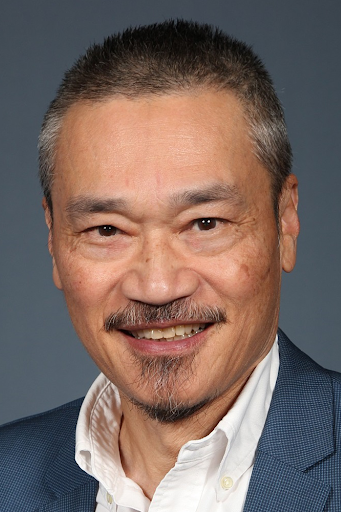AI in Healthcare: Transforming X-ray Radiology and Drug R&D with Two Different Approaches with Machine Learning and Machine Reasoning

|
Who should attend: anyone interested in artificial intelligence (AI) in the healthcare industry, including investors in healthcare companies, doctors/radiologists that read patient slides using AI tools, researcher in machine learning, and those curious to understand how Machine Reasoning differs from Machine Learning and why that’s important.
|
Date and Time
Location
Hosts
Registration
-
 Add Event to Calendar
Add Event to Calendar
- Contact Event Hosts
-
j.riess@ieee.org
- Co-sponsored by IEEE Region 4 Industry Engagement Committee
Speakers
 Dr. Khai Pham of ThinkingNodeLife.ai (TNL)
Dr. Khai Pham of ThinkingNodeLife.ai (TNL)
Distributed Reasoning AI and why it matters for Life Sciences
Humans solve problems by using two main cognitive approaches: Pattern Recognition and Reasoning. Unfortunately, we cannot scale to handle the ever-increasing volumes of data and knowledge. Similarly, Artificial Intelligence (AI) is composed of two main schools: Pattern Recognition (Data Mining/Machine Learning using Big Data) and Problem Solving (Reasoning Computing using Complex Knowledge).
The AI market today is mainly focused on data, scaling Pattern Recognition using Machine Learning (ML). The results have been amazing in applications ranging from self-driving cars to skin cancer diagnosis through image recognition, where extracting correlations from Big Data is the goal. These Pattern Recognition systems work extremely well when “digesting” large amounts of data to discover patterns and to build predictive systems, but they are “black boxes”, meaning they can’t provide an explanation for their results.
However, in a domain such as life sciences where understanding is vital to justify decisions, to intervene based on causal mechanisms, and to improve the system. For example, in drug R&D, understanding the cause-and-effect relationships that govern the molecular mechanism level is crucial to better intervene, i.e. target the right causes of the pathological paths.
The public doesn’t hear much about Reasoning AI because the existing approaches are centralized. It cannot represent the diversity of the different types of reasoning and cannot scale. Today, Distributed Reasoning AI addresses these limitations. This talk will insist on the crucial difference between Pattern Recognition and Reasoning and why it matters based on the problem you want to solve.
Biography:
Combining Medicine (MD) and Artificial Intelligence (PhD), Dr. Khai Pham has been in the field of AI for 30 years. Few have tried to work on unifying AI approaches across the different systems, including Machine Learning, Reasoning AI, and Distributed Multi-Agent AI. He is a leading expert in Distributed AI. Today, with ThinkingNodeLife.ai (TNL), Dr. Pham is introducing the second generation his Distributed AI, a next-gen Generative Distributed Reasoning AI (GDR-AI), that differs from existing Generative AI, such as ChatGPT, by two main elements: it is based on reasoning and not pattern recognition and generates reasoning models (the way humans understand the world and make rational decisions) instead of texts, images, or videos. Applied to drug R&D, GDR-AI generates the most sophisticated Digital Human Cell Clones based on gene expression data allowing Human Cell Safety/Efficacy/Specificity Simulations before any preclinical testing. At TNL, he is surrounded by a multidisciplinary team that was involved in $10+B combined exits.
Dr. Pham is also a founding board member of KWAAI.ai, a non-profit AI Research and Development Lab Democratizing AI. He mainly contributes to the AI Fundamentals. He was the founder & CEO of DataMind, a leading AI company in the Silicon Valley based on the first generation of his Distributed AI. It was used by major financial institutions, marketing centers, and medical manufacturers, and Bank of America acquired the patent in 2012. Later renamed RightPoint, it was acquired by E.piphany (Nasdaq:EPNY) for US$637 Million.
M.D. and Ph.D. in AI (Magna Cum Laude at Sorbonne University Paris). Dr. Pham has published several scientific papers, received international grants, taught AI at LISH-CNRS, received an entrepreneur award from BP, was EIR/Mentor at CONNECT, talked as keynote in conferences and guest lecturer for Master Program in Clinical Research for Dresden International University.
Address:United States
 Najib Akram of GE HealthCare
Najib Akram of GE HealthCare
Improving Display Consistency of Radiographic Images Using Deep Learning
In general radiography, inconsistency of brightness and contrast in initial presentation is a common complaint from radiologists. Inconsistencies, which may be a result of variations in patient positioning, dose, protocol selection and implant could lead to additional workflow by technologists and radiologists to adjust the images. To tackle this challenge posed by conventional histogram-based display approach, an AI Based Brightness Contrast (AI BC) algorithm is proposed to improve the consistency in presentation by using a residual neural network trained to classify X-ray images based on NxM grid of brightness and contrast combinations. More than 10000 unique images from sites in the US, Ireland and Sweden covering 30 anatomy/view combinations were used for training. The model achieved an average test accuracy of 99.2% on a set of 2700 images. AI BC algorithm uses the model to classify and adjust images to achieve a reference look and then further adjust to achieve user preference. Quantitative evaluation using ROI based metrics on a set of 140 images covering 7 anatomies showed a 35.3% improvement in mean pixel intensity consistency and a 15.5% improvement in contrast consistency. A study with application specialists adjusting image presentation of 30 images covering 3 anatomies (foot, abdomen and knee) was performed. On average, the application specialists took 20 minutes to adjust the conventional set, whereas they took 10 minutes for the AI BC set. The proposed approach demonstrates the feasibility of using deep learning techniques to reduce inconsistency in initial display presentation and improve user workflow.
Biography:
Najib Akram is a seasoned Data Scientist at GE HealthCare, specializing in X-ray Image Quality. With over a decade of experience in research, healthcare, computer vision, and data science, Najib has a proven track record of developing cutting-edge systems, software tools, data-intensive applications, and AI-driven image processing algorithms for medical imaging. In his current role, Najib leads deep learning-based projects dedicated to achieving consistent image presentation, enhancing Image Quality (IQ), and elevating the diagnostic value of X-ray images. Collaborating closely with fellow researchers, Najib plays a pivotal role in optimizing AI models, deploying them for on-device inferencing, and monitoring their performance. Furthermore, he devises comprehensive strategies for data collection, annotation, augmentation, training, and validation, ensuring compliance with rigorous regulatory standards.
Najib's academic credentials include a Master of Science degree from Marquette University, and he has contributed significantly to the field by publishing papers in renowned international journals like ISBI and SPIE. His expertise extends to being a sought-after scientific speaker, making impactful presentations at esteemed conferences such as RSNA.
Media
| AI in Healthcare: FLYER | AI in Healthcare: FLYER | 346.09 KiB |
